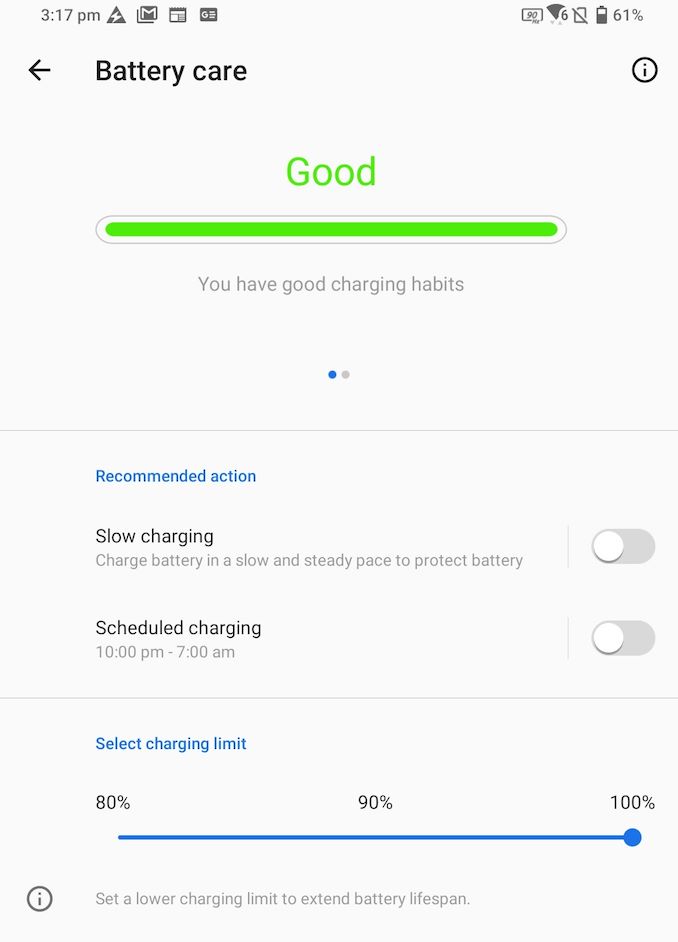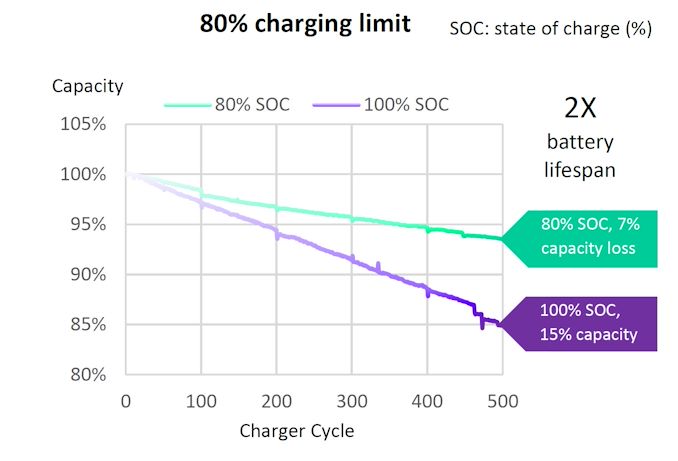The ASUS ZenFone 7 Pro Review: The Triple Flip-Camera
by Andrei Frumusanu on September 1, 2020 3:00 AM EST- Posted in
- Mobile
- Asus
- Smartphones
- ZenFone 7
- ZenFone 7 Pro
Battery Life
The ZenFone 7’s come with a 5000mAh battery which is above-norm compared to other devices on the market. Together with what should be an efficient display and the Snapdragon 865 SoC, we hope the ZenFone 7 Pro to perform quite well in the battery tests.

In the web-browsing test, the phone reached “only” 10.95h when in the 90Hz display mode. I say “only”, as given the phone’s very large battery capacity I had expected a little more out of the device. In fact, it lags behind the S20 Ultra which also houses a 5000mAh battery, but runs its screen at 120Hz.

In PCMark, we likewise see some rather disappointing results. At 60Hz, the phone lasted “only” 10.21h which is far below the expectations of a device with such a larger calibre battery. It’s quite a contrast to the ROG Phone III’s 16.33h runtime even though the devices should fare similarly at this refresh-rate, with an only 17% difference in battery capacity.
Likewise, I’m rerunning the 90Hz battery test to verify some results and issues I ran into.
Overall, the ZenFone 7’s battery life was quite odd and behaving quite below expectations. I’m not sure as to why this is happening. It’s true that the ZenFone is tuned to be more aggressive in performance than the ROG Phone III, but the delta in battery life between the two devices is too great, and comparatively to other 1080p 90Hz S865 devices it also doesn’t do as well. The OnePlus 8 with a 4300mAh battery clearly outpaces the ZenFone 7 without too much trouble.
Battery Health & Care
ASUS had put what I deem to be a quite unusual amount of focus on battery health of the device, and I found this to be a breath of fresh air amongst a crowd of vendors who seemingly just want to one-up themselves with absurd high charging speeds.
Beyond allowing for the option to disable fast-charging altogether from the phone side, and having smart scheduled charging features which allow you for example to only top-off the phone to 100% only in the mornings before you wake up, ASUS goes even further and even allows you to artificially limit the maximum state of charge the phone charges to.
Limiting the maximum state of charge level to 80% instead of 100% for example claims to reduce the battery capacity degradation over time by half. The above graph and data showcase the capacity degradation over charge cycles on the ZenFone 6 with 18W fast-charging.
ASUS deemed all these options and features to be beneficial to the customer and his device over prolonged usage – and the battery on the ZenFone 7 is even specially designed with a thicker anode-cathode separator to allow for faster charging and better capacity retention.
ASUS had put what I deem to be a quite unusual amount of focus on battery health of the device, and I found this to be a breath of fresh air amongst a crowd of vendors who seemingly just want to one-up themselves with absurd high charging speeds.
The phone features 30W USB-PD charging and features a corresponding (PPS compatible) charger in the box by default, however they don’t hide that faster charging does degrade your battery faster.
I’ve never seen a vendor be this transparent and forthright about the negatives of fast-charging and battery degradation in general, and I applaud ASUS for it.












31 Comments
View All Comments
GC2:CS - Tuesday, September 1, 2020 - link
I find the battery lifespan saving max charge limit comparison somewhat dishonest.For the same usage you need 500 cycles at 80 and just 400 if you charge to 100. So it is more like 7 and 12% degradation.
I think limiting charge might be usefull for things like headphones. They just sit for days in their case charged to 100%.
Also I am quite woried where we are going with battery capacities. Looks like even 4000+ mAh is not a guarantee of great battery life these days.
CampGareth - Tuesday, September 1, 2020 - link
That's assuming you drop to 0% charge every single time, under that usage you're going to burn through batteries regardless. The state of charge limit is intended more for folks that stay at a high charge percentage. I can't remember the last time my phone dropped below 60%, it's on charge at home and at work so spends a lot of time sitting at 100% charge which degrades the battery faster even when it's idle.imoc - Tuesday, September 1, 2020 - link
Not true. Their graph states SoC(State of charge) and charge cycle doesn't mean Any%-80%, a full 100% battery top up counts as one(such as 30-80 two times).close - Tuesday, September 1, 2020 - link
There are a few trends to dislike, small batteries for the consumers attached to the phone (mega SoCs, gazillion Hz screens, all of the Gs, all the time), glass backs especially when not actually needing it, removing the headphone jack even on phones that are clearly big enough to fit one, etc. This phone ticks most of them.SirDragonClaw - Tuesday, September 1, 2020 - link
You need to learn how modern batteries work...huyhung411991 - Tuesday, September 1, 2020 - link
First paragraph in Battery Life section is repeated.Ryan Smith - Tuesday, September 1, 2020 - link
Thanks!linuxgeex - Tuesday, September 1, 2020 - link
Before I even look at image quality with video recording, I pay attention to the background noise. You should be able to tap the screen, adjust volume up and down, power the screen on and off, and walk in light wind without hearing distracting sounds. This camera failed this basic requirement with flying colours lol.Kangal - Tuesday, September 1, 2020 - link
Dunno, it's hard to judge the quality without a reference.The photo, video, microphone comparisons should have something like a Sony A7 + Lav, as that's basically professional quality, and it would be much easier to spot where phone's deficiencies lay.
Bonus points should be made to compare all devices on a quick Auto Mode, but Manual-Professional Adjustment on the Mirrorless. That's the most important comparison. And do it in Good Lighting, Overcast, and Low-light conditions. And do it in Macro, Regular, and Zoom modes.
Manual Modes are interesting on the new Sony Xperia 1 ii Pro, and LG V60... but are somewhat gimmicky. Phones are meant for quick "point and shoot", for professional quality you can't subsidise a phone with manual mode for a proper DSLR or Mirrorless. It would be like trying to use a hot-hatch to move heavy loads, then complaining, instead of using a pickup truck.
linuxgeex - Tuesday, September 1, 2020 - link
@Andrei - several of the camera comparison photos are missing and some are backwards.